Affiliate links on Android Authority may earn us a commission. Learn more.
Samsung Galaxy S6 vs HTCOne M9 vs the competition
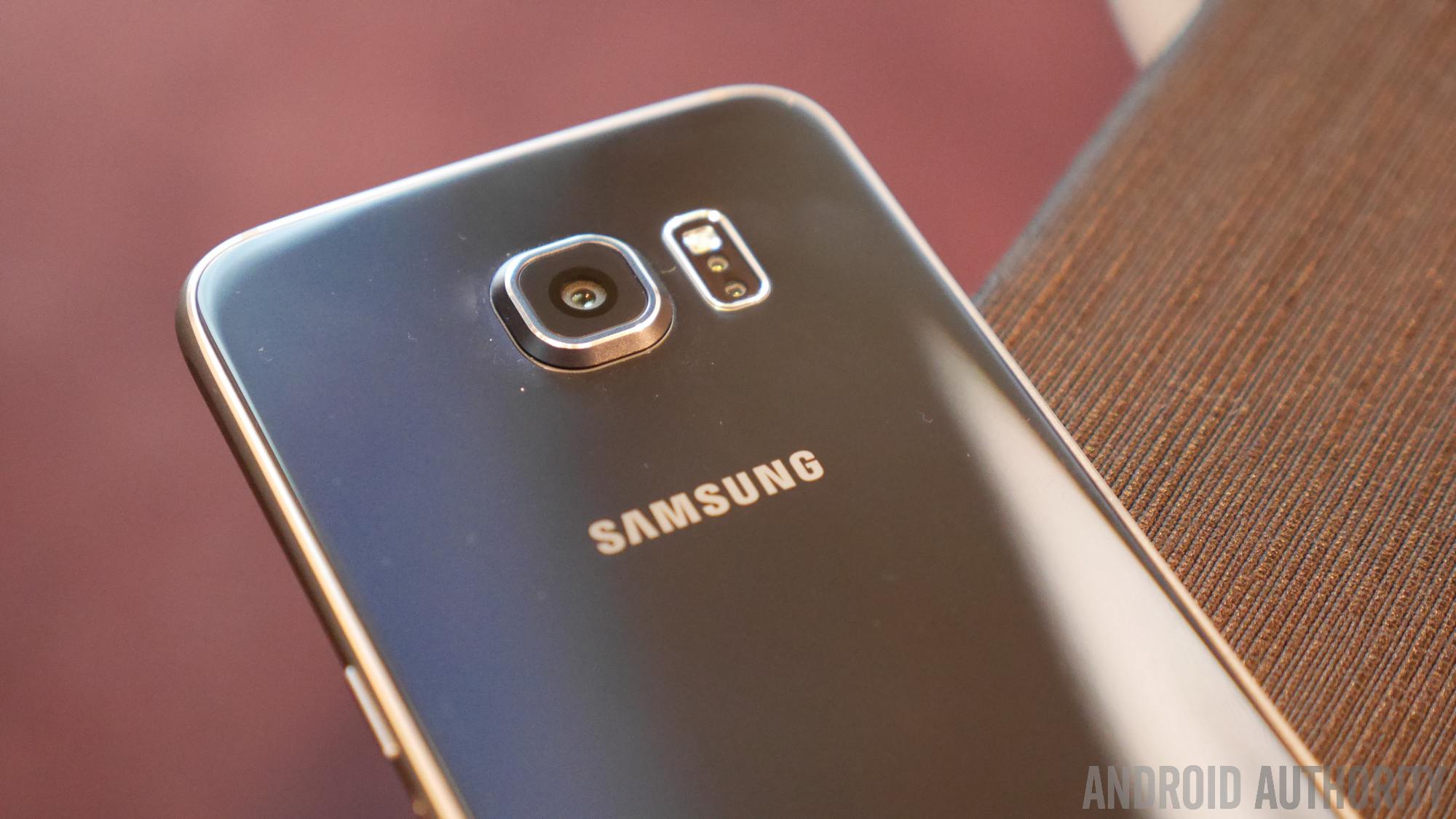
Both HTCand Samsung have now announced their latest flagship smartphones here at MWC 2015, so it’s time for a showdown. Obviously we can’t really make a judgement call until we get a more extensive look at the two devices side by side, but pitting them against each other on paper is still a good way to get a feel for how the two handsets differ.
With all that said, let’s jump in and take a preliminary look at how the hardware inside the Galaxy S6 compares with the One M9, as well as the best handsets available last generation.
| Galaxy S6 | One M9 | |
|---|---|---|
Display | Galaxy S6 5.1-inch Super AMOLED, 2560 x 1440 (577 ppi) | One M9 5-inch LCD, 1920x1080 (442 ppi) |
SoC | Galaxy S6 14nm Exynos 7420 | One M9 20nm Snapdragon 810 |
CPU | Galaxy S6 4x Cortex-A57 + 4x Cortex-A53 | One M9 4x Cortex-A57 + 4x Cortex-A53 |
GPU | Galaxy S6 ARM Mali-T760 | One M9 Adreno 430 |
RAM | Galaxy S6 3GB | One M9 3GB |
Storage | Galaxy S6 32/64/128 GB | One M9 32GB |
MicroSD? | Galaxy S6 No | One M9 Yes |
Cameras | Galaxy S6 16MP OIS rear, 5MP front | One M9 20MP rear, Ultrapixel front |
Battery | Galaxy S6 2,550 mAh | One M9 2,840 mAh |
Dimensions | Galaxy S6 143.4 x 70.5 x 6.8 mm | One M9 144.6 x 69.7 x 9.6 mm |
Starting with the display, Samsung’s 5.1-inch Galaxy S6 makes the move up to QHD (2560 x 1440), matching the likes of the LG G3, Nexus 6 and the Galaxy Note 4. HTChas chosen to stick with 1080p in its 5-inch device, which should give the Galaxy S6 a slight advantage at close viewing distances (content permitting). However, 1080p is still very much in the sweet spot for a 5-inch handset, so the M9 won’t disappoint. AMOLED vs LCD is still an ongoing debate, but usually you’ll find more vivid colors with Samsung’s AMOLED technology, be that for better or worse depending on your own preference.
Under the hood, this generation sees the first 64-bit flagships from both companies, but, unlike previous years, the two handsets feature different processing packages. While not totally dissimilar, there are some important differences between Samsung’s Exynos 7420 and Qualcomm’s Snapdragon 810 powering the One M9, and some big differences when compared with last gen’s Snapdragon 801/805 handsets.
| LG G Flex 2 | Galaxy Note 4 | Nexus 6 | |
|---|---|---|---|
Display | LG G Flex 2 5.5-inch P-OLED, 1920x1080 (403 ppi) | Galaxy Note 4 5.7-inch Super AMOLED, 2560 x 1440 (515 ppi) | Nexus 6 6-inch AMOLED, 2560 x 1440 (493 ppi) |
SoC | LG G Flex 2 20nm Snapdragon 810 | Galaxy Note 4 20nm Exynos 5433 | 28nm Snapdragon 805 | Nexus 6 28nm Snapdragon 805 |
CPU | LG G Flex 2 4 x Cortex-A57 + 4 x Cortex-A53 | Galaxy Note 4 4 x Cortex-A57 + 4 x Cortex-A53 | 4 x Krait 450 | Nexus 6 4 x Krait 450 |
GPU | LG G Flex 2 Adreno 430 | Galaxy Note 4 Mali-T760 | Adreno 420 | Nexus 6 Adreno 420 |
RAM | LG G Flex 2 2/3GB | Galaxy Note 4 3GB | Nexus 6 3GB |
Storage | LG G Flex 2 16/32GB | Galaxy Note 4 32GB | Nexus 6 32GB/64GB |
MicroSD? | LG G Flex 2 Yes | Galaxy Note 4 Yes | Nexus 6 No |
Cameras | LG G Flex 2 13MP OIS rear, 2.1MP front | Galaxy Note 4 16MP OIS rear, 3.7MP front | Nexus 6 13MP OIS rear, 2MP front |
Battery | LG G Flex 2 3,000 mAh | Galaxy Note 4 3,220 mAh | Nexus 6 3,220 mAh |
Dimensions | LG G Flex 2 149.1 x 75.3 x 7.1-9.4 mm | Galaxy Note 4 153.5 x 78.6 x 8.5 mm | Nexus 6 159.3 x 83 x 10.1 mm |
Both SoCs make use of an octa-core ARMv8-A Cortex-A57 and A53 configuration, offering a superior balance between peak performance and low background power consumption over the last generation. However, Samsung’s chip will be produced on a 14nm process versus the Snapdragon 810’s 20nm, meaning extra energy savings that could be put towards additional performance or batter life. It looks like Samsung has opted for the latter, as the Galaxy S6 features a smaller 2,550mAh than the One M9, both of which are below the 3,000mAh target that many handsets exceeded last generation.
Even so, both SoC’s will offer energy savings over last year’s 28nm Snapdragon chips. Smaller, more energy efficient processing packages are the calling card of the 2015 generation.
We saw some performance hitching with the LG G Flex 2’s 1080p display and Snapdragon 810 combination, but haven’t noticed the same problem with HTC’s One M9. On the CPU side of things then, performance between the Galaxy S6 and One M9 should be almost identical, and will be in the region of recent high-end handsets like the Galaxy Note 4 and G Flex 2, and marginally ahead of older Snapdragon 800 and 801 handsets.
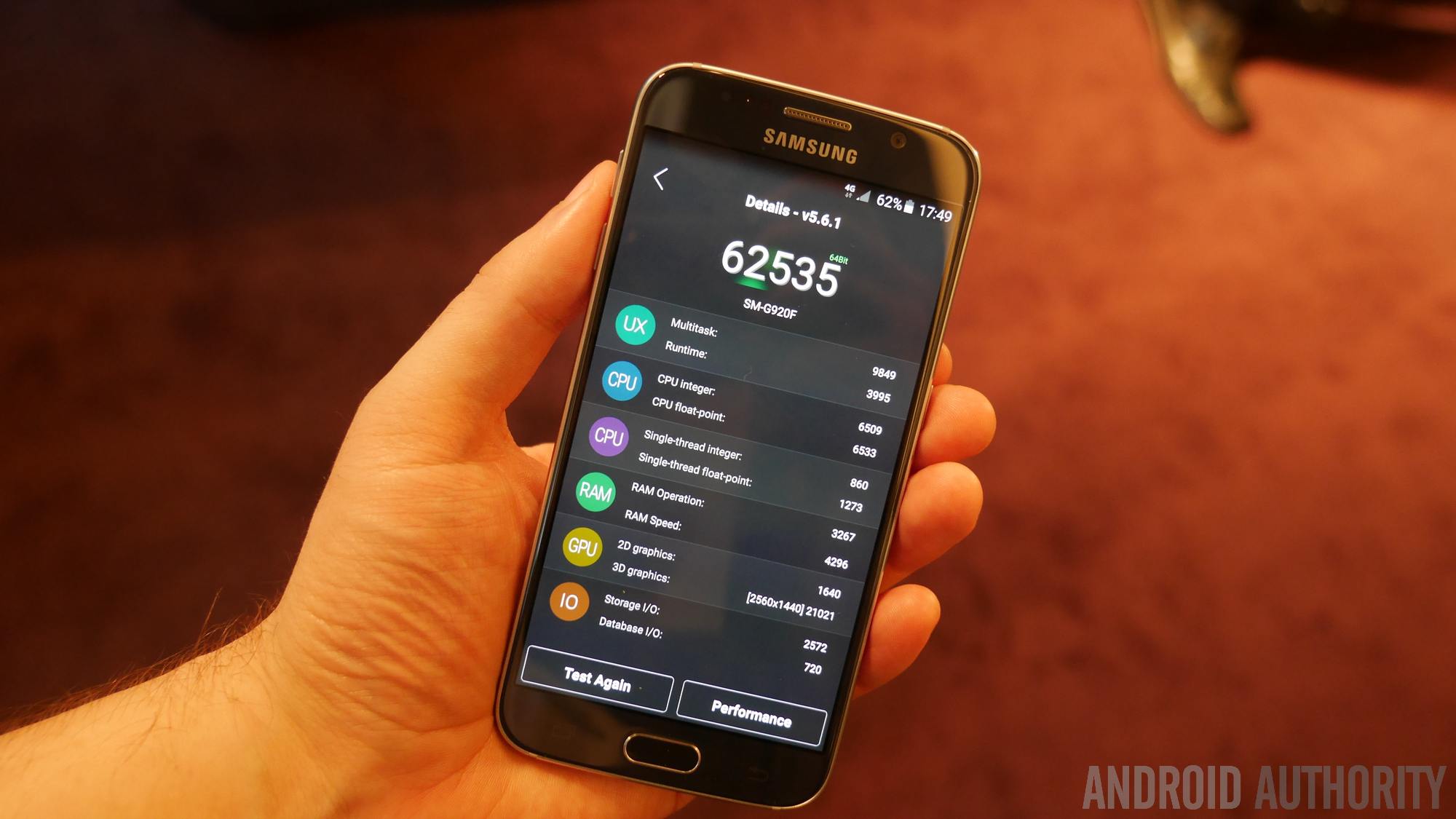
GPU performance could be a different story, however. The Galaxy S6’s QHD display will put additional stress on the graphics chip when playing games, compared with the M9’s 1080p display. We saw some performance slowdowns with the Adreno 330 powered LG G3, but the Galaxy Note 4’s Mali-T760 proved to be a more adequate performer at this resolution. Benchmarks indicate that the Galaxy S6’s Exynos 7420 has some additional GPU grunt over the older Exynos 5433, probably as a result of two additional GPU cores. We’ve already seen that the Snapdragon 810’s Adreno 430 flies at 1080p, so performance won’t be an issue on the M9.
We’ll have to run some real world tests, but it seems that Samsung has bulked up its GPU to help cope with the extra display resolution. However, both of these components could end up costing the handset some battery time compared with the M9 and other smartphones on the market, so we’ll definitely have to run some battery tests too.
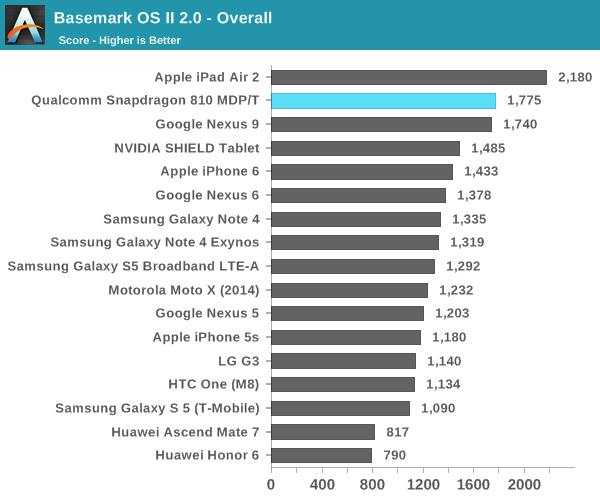
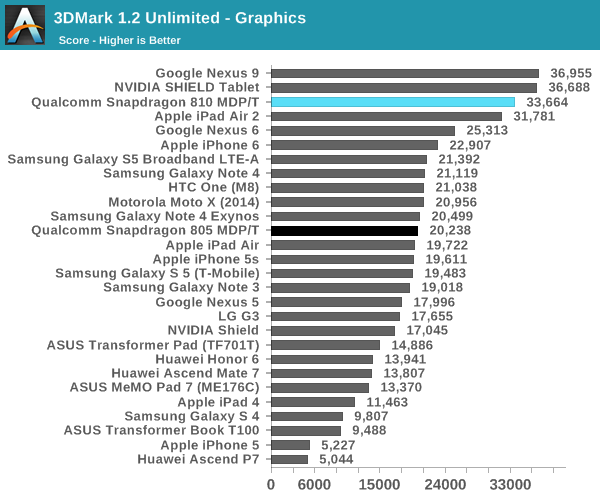
From the benchmark’s that we’ve seen, the Snapdragon 810 comes out ahead of the existing pack, mostly in the graphics department. Given the similar CPU architecture of the Exynos 7420, stronger GPU but more demanding display resolution, it’s likely that performance will be similar for Samsung’s handset too.
Storage options are an interesting choice this time around. Samsung has disappointingly dropped microSD card support in favor of aesthetic design, but now offers 128GB of storage for those who need it. HTCis sticking with a single 32GB storage option, but offers microSD support for those who want it. The M9 is more in-line with what is currently available in other handsets, while Samsung’s 128GB option far exceeds other Android manufacturers.
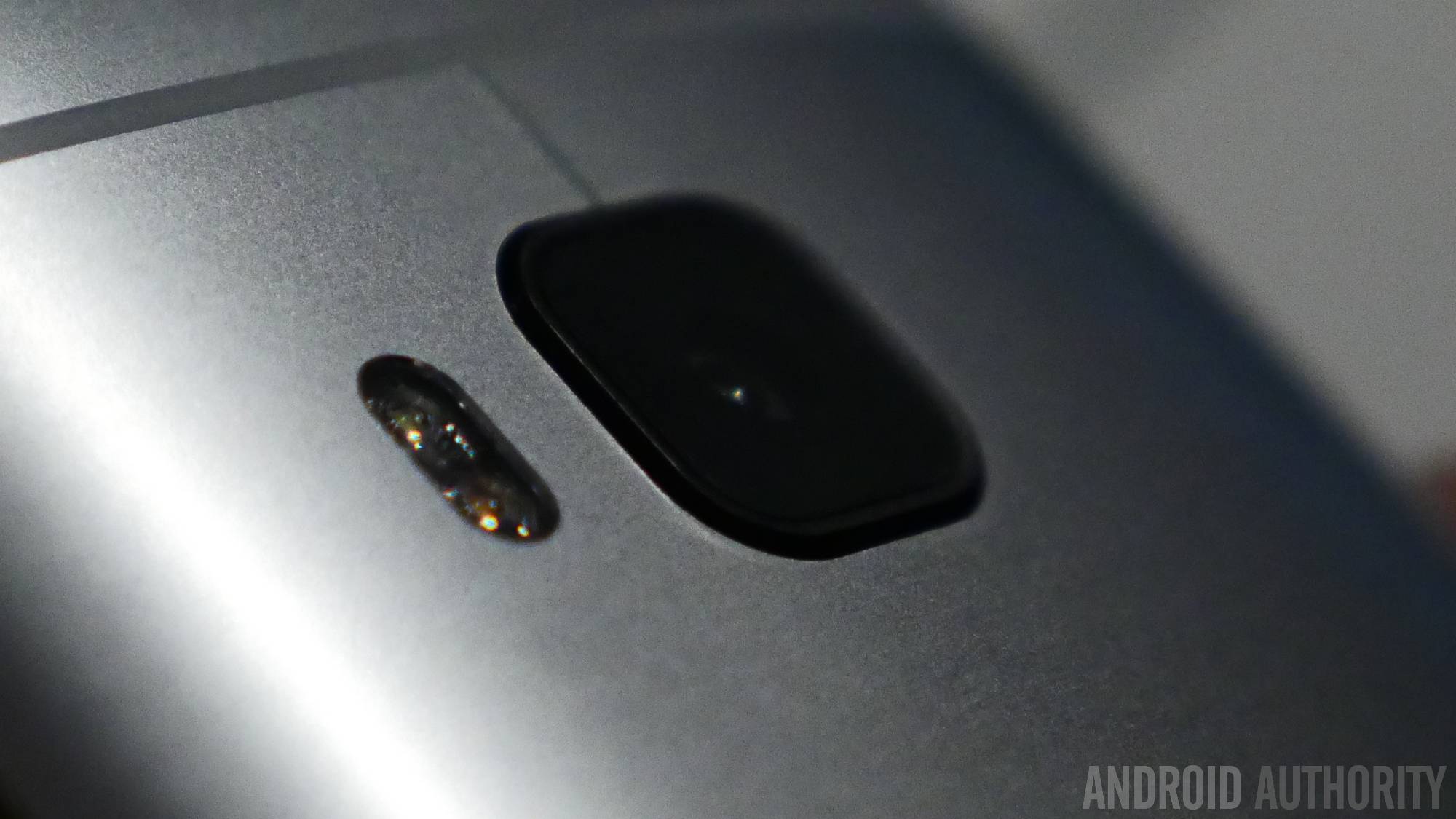
As for cameras, it’s impossible to judge accurately without some real world test shots, but HTChas seriously upped its resolution game following criticisms of its Ultrapixel technology, and has moved over to a back-illuminated sensor for better low-light performance. 20MP vs 16MP is close to call in terms of sharpness, so we’ll have to wait to test low-light and noise performance to decide on the winner, but both should be very good. If you’re a selfie lover, there’s a choice to be had between Samsung’s 90 degree wide-angle 5MP camera or HTC’s Ultrapixel technology, both of which exceed most front cameras on recent high-end smartphones.
HTC has closed the camera resolution gap with Sony’s Xperia Z flagships, while Samsung’s 16MP sensor, the same as in the Galaxy Note 4, sits nicely above the now common high-end 13MP resolution. However, we would ideally liked to have seen HTCadopt optical image stabilization, which was already a staple of LG and Samsung handsets last gen.
| LG G3 | OnePlus One | Sony Xperia Z3 | |
|---|---|---|---|
Display | LG G3 5.5-inch LCD, 2560 x 1440 (538 ppi) | OnePlus One 5.5-inch LCD, 1920x1080 (401 ppi) | Sony Xperia Z3 5.2-inch LCD, 1920x1080 (424 ppi) |
SoC | LG G3 28nm Snapdragon 801 | OnePlus One 28nm Snapdragon 801 | Sony Xperia Z3 28nm Snapdragon 801 |
CPU | LG G3 4 x Krait 400 | OnePlus One 4 x Krait 400 | Sony Xperia Z3 4 x Krait 400 |
GPU | LG G3 Adreno 330 | OnePlus One Adreno 330 | Sony Xperia Z3 Adreno 330 |
RAM | LG G3 2/3GB | OnePlus One 3GB | Sony Xperia Z3 3GB |
Storage | LG G3 16/32 GB | OnePlus One 16/64 GB | Sony Xperia Z3 16/32 GB |
MicroSD? | LG G3 Yes | OnePlus One No | Sony Xperia Z3 Yes |
Cameras | LG G3 13MP OIS rear, 2.1MP front | OnePlus One 13MP rear, 5MP front | Sony Xperia Z3 20.7MP rear, 2.2MP front |
Battery | LG G3 3,000 mAh | OnePlus One 3,100 mAh | Sony Xperia Z3 3,100 mAh |
Dimensions | LG G3 146.3 x 74.6 x 8.9 mm | OnePlus One 152.9 x 75.9 x 8.9 mm | Sony Xperia Z3 146 x 72 x 7.3 mm |
Extra features are usually what differentiate the cutting edge flagships from the strong performers, and here the Galaxy S6 perhaps begins to pull away from the M9 and the rest of the pack.
Take it or leave it, the Galaxy S6 comes with an improved fingerprint scanner, will support Samsung’s upcoming NFC payment platform, and will work with both WPC and PMA wireless charging standards. Both handsets support fast charging, as do many of last gen’s flagships, but HTCdoesn’t include any wireless charging options. To HTC’s credit, BoomSound is still a good feature that will likely win some consumers over, and the handset supports slightly faster Cat 9 LTE speeds of 450 Mbps, compared with the S6’s Cat 6 peak download of 300Mbps.
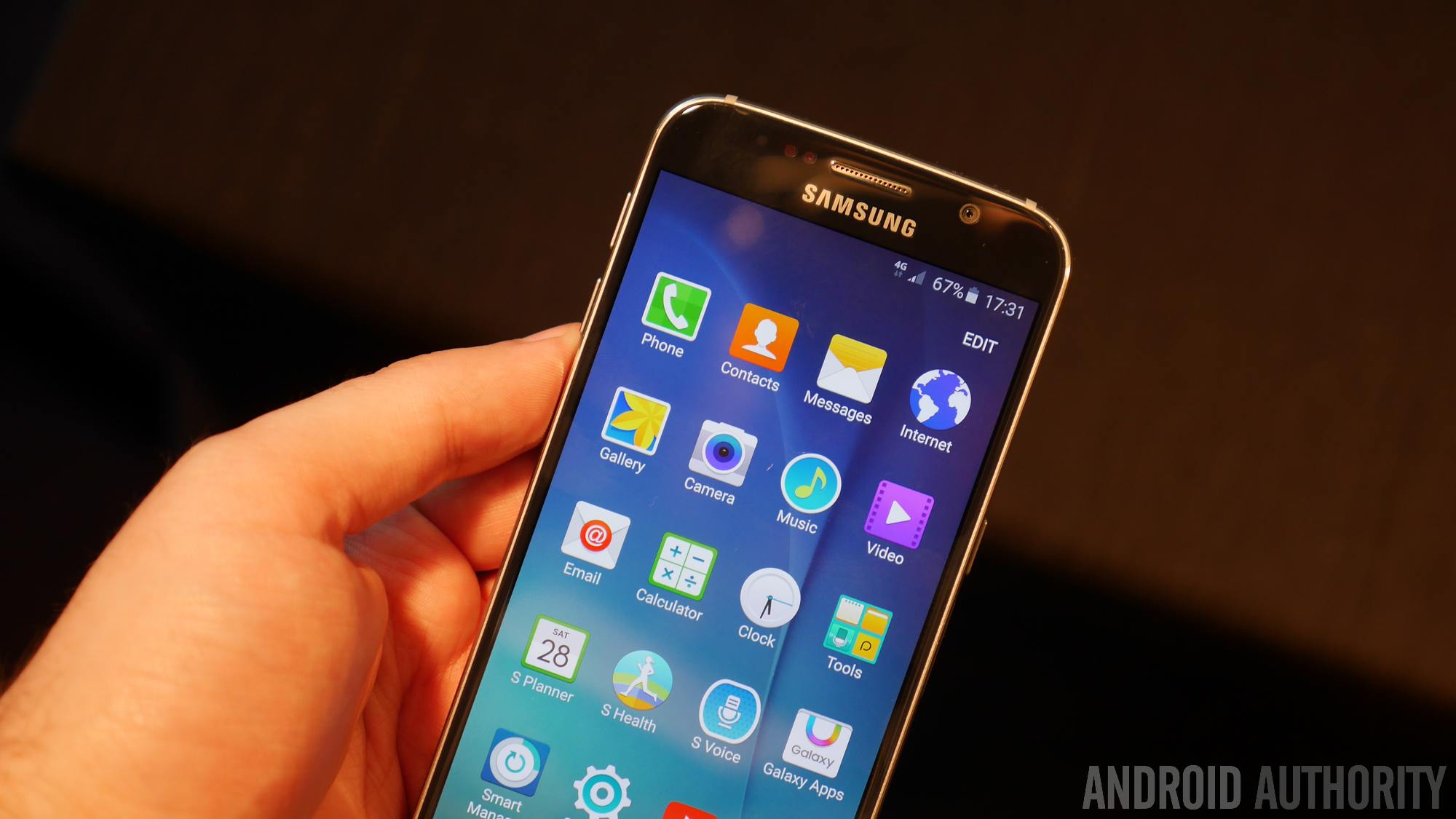
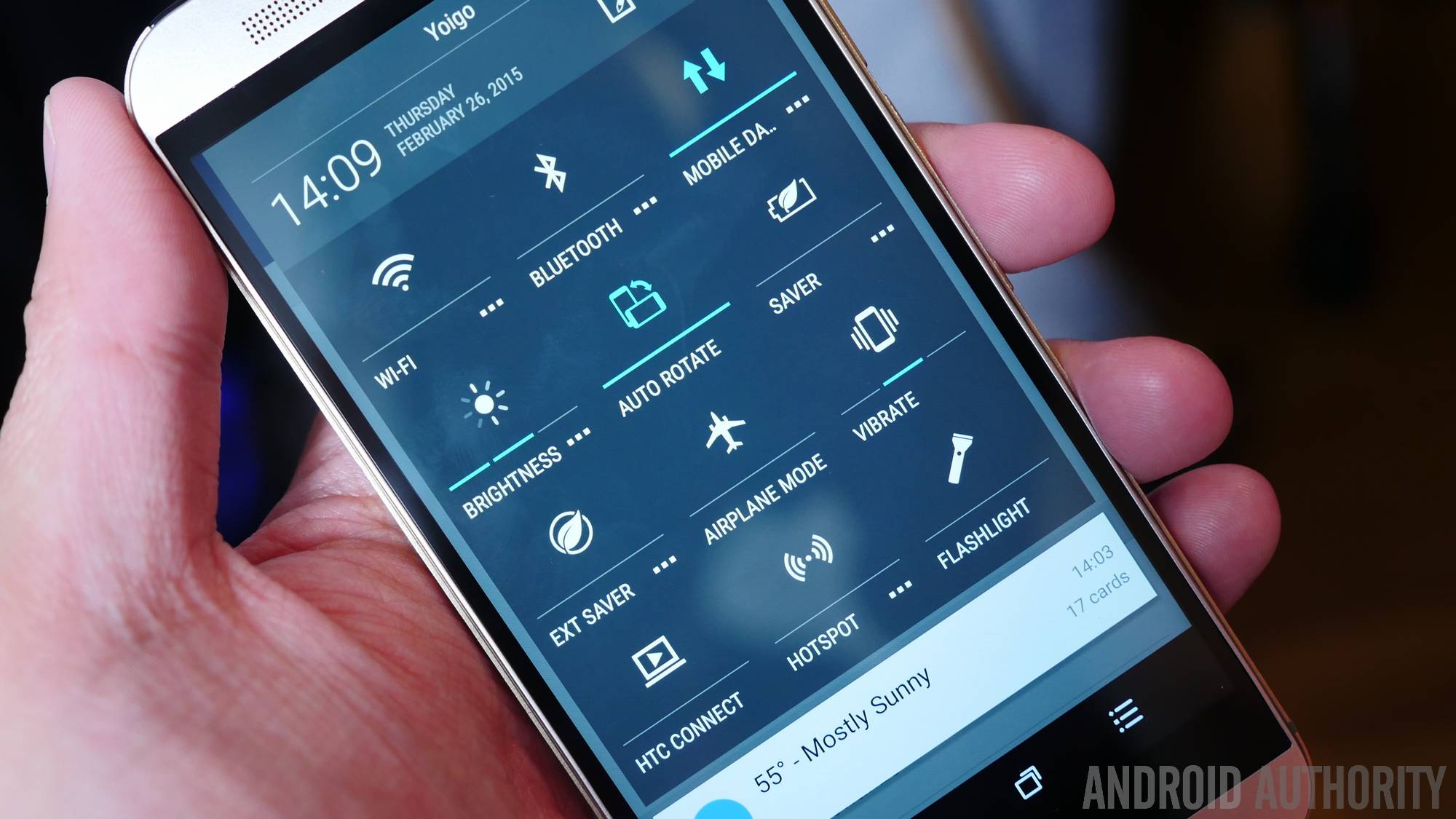
Software could also be a decisive factor for some. Although Samsung has slimmed down its TouchWiz software this time, HTChas an excellent track record of offering excellent features while maintaining smooth performance throughout. Both devices now support themes, which will provide plenty of choice for those who don’t like the default aesthetics.
Android Lollipop’s little tweaks also bring marginal improvements, but as most last generation handsets have already begun receiving similar updates, having the latest version of Android is not a major selling point as it has been in previous years.
Compared with other handsets on the market, the HTCOne M9 is a refinement of last years 5-inch flagship standard, offering some improved specifications, a tad more processing power and all the features that most people will need. However, many may be disappointed that look and specifications are still remarkably similar to last year’s device.
Samsung’s Galaxy S6 is more of a leader in the hardware department, featuring the very best of Samsung’s display technology and slightly more advanced SoC hardware, with some additional features thrown in to separate it from the pack. Overall, it offers a bit more over its last generation iteration than the M9 does, and should end up as the best performing QHD handset on the market. However, the smaller battery may end up as a bottleneck for all of this tech.
While the Nexus 6, Galaxy Note 4, G Flex 2 and One M9 all offer decent improvements over the 1080p Snapdragon 800 generation, the Galaxy S6 combines all of these changes together into a single package and with it the 64-bit, QHD era has fully arrived.
Where do the Galaxy S6 and One M9 fit in your rankings?